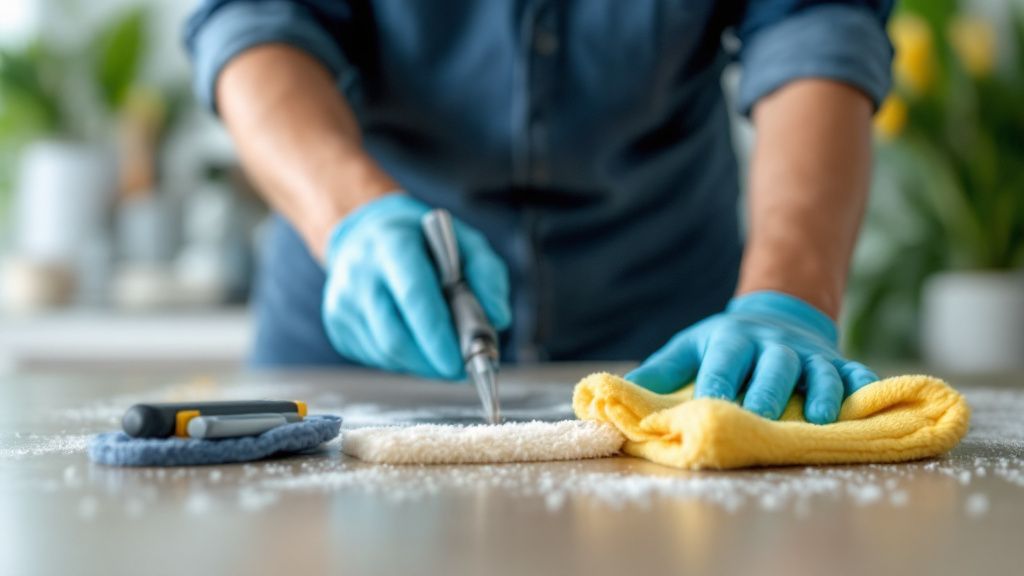Keeping your home free from pests is essential for comfort and safety. By adopting effective pest prevention strategies, you ensure lasting peace of mind. Begin by understanding residential pest control, which involves a structured approach to managing pests in and around your home. Home pest management can be as simple as integrating some DIY pest control methods, such as sealing cracks and using non-toxic pest control solutions to deter unwanted visitors. For long-term pest solutions, integrate pest-proofing tips like using pest-resistant materials and landscaping. Regular pest inspection and employing eco-friendly pest control techniques are crucial parts of an integrated pest management approach. Additionally, staying informed through pest control education helps you adopt best practices tailored to your home environment, thereby minimizing infestation risks.
Understanding the Threat: Common Household Pests
Common household pests pose significant challenges to maintaining a serene living space. Ants, for instance, may infiltrate your kitchen, searching for food and shelter, while termites silently undermine your home’s structure. Many homeowners lean towards residential pest control as a solution, employing preventative pest control methods and regular pest inspections to identify and address potential infestations promptly.
On one hand, DIY pest control enthusiasts believe these household nuisances can be managed with simple non-toxic pest control techniques and pest-proofing tips. On the other hand, pest control experts emphasize the importance of comprehensive pest management systems that include professional intervention for more serious infestations.
Beyond ants and termites, rodents and cockroaches can become persistent invaders, bringing health risks and discomfort. Pest prevention strategies, such as installing pest prevention barriers and adopting indoor pest strategies, are critical in safeguarding your home environment from these common threats.
Long-term pest solutions often require a blend of strategies, including eco-friendly pest control, pest-resistant materials, and pest prevention plans tailored to your needs. Pest control education further empowers you to recognize the signs of infestation early, enabling the adoption of effective pest-proofing homes practices and ensuring peace of mind.

Evaluating Your Home for Vulnerabilities
Assessing your home for potential pest vulnerabilities is a crucial step in residential pest control. Start by examining common entry points like doors, windows, and foundation cracks. Utilizing pest exclusion techniques can help seal these areas, which is a vital aspect of any pest prevention plan. Regular pest inspection by engaging pest control experts ensures that no detail is overlooked, especially in hard-to-reach places.
Did you know? According to a study by the National Pest Management Association, 33% of American homes have experienced mouse issues. Addressing structural vulnerabilities early is key. Implementing pest-resistant materials and pest-proofing tips, such as using weather stripping and caulking, strengthens the barrier against these unwanted guests.
Consider the outdoor environment in your evaluation. Pest-resistant landscaping and outdoor pest prevention can minimize the attractiveness of your property to pests. Trimming bushes and removing standing water are effective pest prevention tips that contribute to home pest prevention. Seasonal pest prevention remains vital, especially during breeding periods when pests are most active.
Integrating eco-friendly pest control and non-toxic pest control methods into your home pest management strategy is beneficial for health and sustainability. Educating yourself about pest control maintenance and diverse pest control methods allows for effective and proactive management. Incorporating pest monitoring techniques and adopting best pest prevention practices ensures long-term pest solutions and a safer home environment.

Sealing Entry Points to Keep Pests Out
Effectively sealing entry points is essential in keeping pests out of your home and safeguarding your living space. Begin by closely inspecting your home’s perimeter for gaps or openings around doors, windows, and utility lines. Employing pest exclusion techniques, such as applying caulking and weather stripping, serves as a primary line of defense. These preventative pest control measures play a crucial role in your home pest management plan.
For example, ensuring every door in your home has a properly fitted door sweep can significantly reduce the likelihood of insects and rodents entering your home. This simple, yet effective, pest-proofing tip can be complemented by using non-toxic pest control materials to close off any potential refuge for pests within crawl spaces or attics.
Focusing on structural integrity is important. Seasonal pest prevention should include a thorough review of your home’s infrastructure, looking for wear and tear that could create entry points. Regular pest control maintenance by a pest control expert can help identify these vulnerabilities and provide integrated pest management solutions tailored to your needs.
Implementing indoor pest strategies, such as checking attic insulation and basement foundations, ensures that these commonly overlooked areas are also sealed and protected. Outdoor pest prevention is equally vital, where pest-resistant landscaping can reduce the natural shelters that attract pests, further strengthening your pest prevention plan.
Pest control education empowers you to recognize entry points and utilize pest-proofing homes techniques effectively. By consistently monitoring these points and using pest-resistant materials, you equip your home with some of the best pest prevention practices. Engaging in proactive pest monitoring techniques is an integral part of achieving long-term pest solutions and maintaining peace of mind.

Maintaining a Clean and Clutter-Free Environment
Maintaining a clean and clutter-free environment is fundamental in residential pest control, as it significantly reduces the spaces where pests can thrive. Clutter provides hiding spots for pests, making it a challenge to monitor their presence effectively. Regular cleaning routines that focus on eliminating food debris and moisture are critical indoor pest strategies. By keeping your kitchen and storage areas meticulously clean, you help deter pests from settling in your home environment.
Tracing its evolution from ancient agricultural practices, the concept of maintaining cleanliness to deter pests has long been a cornerstone of pest management. By eliminating unnecessary clutter and staying organized, you create an inhospitable atmosphere for pests. Implementing eco-friendly pest control methods, alongside proactive pest exclusion techniques, plays an essential role in integrated pest management. These practices work in harmony with seasonal pest prevention and pest control maintenance, forming a resilient barrier against infestations.

Integrating Natural Pest Deterrents
Integrating natural pest deterrents into your home pest management strategy can enhance eco-friendly pest control efforts without harmful chemicals. Using herbs like mint and basil can repel certain insects, offering a non-toxic pest control solution beneficial for indoor pest strategies. These plants can also be incorporated into pest-resistant landscaping, boosting outdoor pest prevention while beautifying your garden.
Garlic, vinegar, and essential oils serve as effective DIY pest control methods. These natural substances can deter a range of pests, including ants and mosquitoes, making them valuable in your pest prevention arsenal. Seasonal pest prevention plans can incorporate these items to adapt to the changing pest populations throughout the year.
In the next few years, natural pest deterrents are likely to become a primary focus, as consumers lean toward sustainable and non-toxic options. Pest control products that are both safe and effective will be at the forefront of innovation. Pest control experts and pest control education initiatives are expected to increasingly spotlight these eco-friendly solutions to align with the best pest prevention practices.
Utilizing such natural deterrents aligns with preventative pest control strategies and long-term pest solutions. They act as a complement to more conventional pest proofing tips and techniques. Residential pest control benefits greatly from an integrated pest management approach, which balances traditional and modern methods for optimal success.

The Role of Regular Maintenance and Cleanliness
Regular maintenance and cleanliness play a pivotal role in effective residential pest control by eliminating the conditions that attract pests. Consistent cleaning routines, such as sweeping up food crumbs and keeping kitchens tidy, reduce food sources for insects and rodents. Combined with pest control maintenance, these practices form the foundation of indoor pest strategies that prevent pest infestations and promote a hygienic living environment.
Routine pest inspections are an essential part of home pest management, identifying areas that may be susceptible to pest entry or habitation. Checking and maintaining the integrity of pest prevention barriers enhances your prevention plans. Integrating these inspections with eco-friendly pest control approaches contributes to long-term pest solutions that are both safe and effective for your family and the environment.
In the next few years, technology is likely to transform pest monitoring and maintenance practices, making them more precise and predictive. Innovations in pest management systems and pest monitoring techniques will provide detailed insights, helping homeowners and pest prevention professionals to preemptively address potential pest issues before they escalate.
Adopting best pest prevention practices, supported by ongoing pest control education, empowers you to implement preventative pest control techniques effectively. This holistic approach not only keeps your home clean but also ensures pest-proofing homes techniques are applied consistently, minimizing the threat of pests and maximizing peace of mind.


